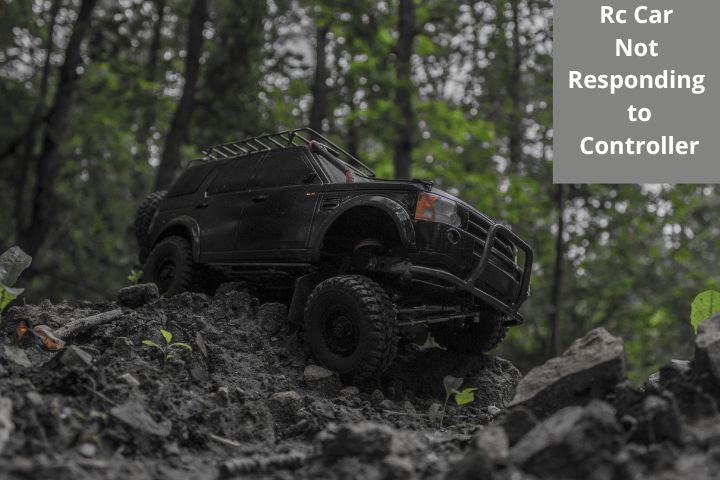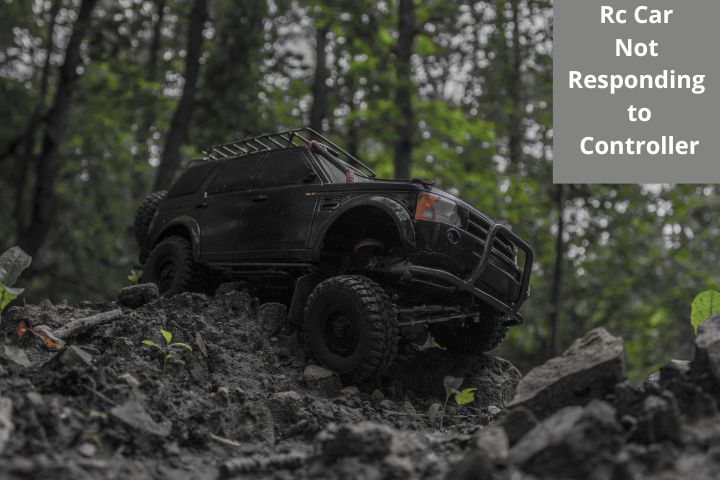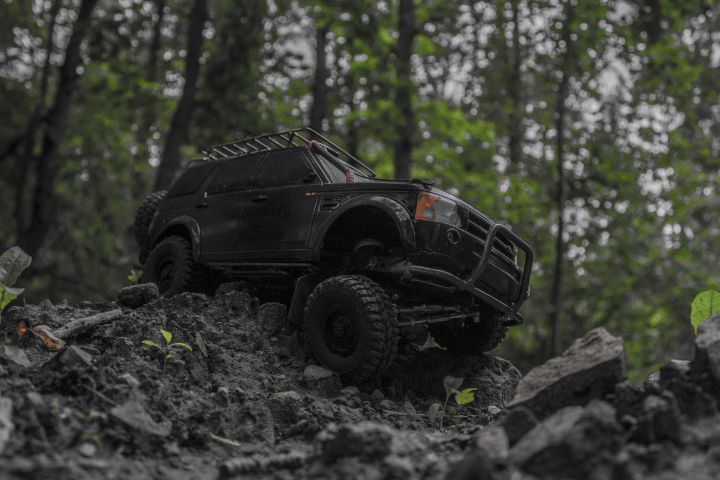
Rc Car Not Responding to Controller? RC cars have become increasingly popular over the years and it’s easy to understand why. The thrill of controlling a remote-controlled car is unmatched and it makes for great entertainment. With a few simple steps, you can be driving your RC car around in no time. All that you need to get started is the actual RC car, its battery, and a controller. The controller operates the electrical signals between the user and the RC car. These signals are what enable you to control your vehicle remotely. When used responsibly, an RC car can provide a thrilling adventure without leaving one’s backyard!
Rc Car Not Responding to Controller
Experiencing a non-responsive RC car can be extremely frustrating, especially if this is your first time using one. If the car won’t respond to the controller, the best thing you can do is troubleshoot by testing out all components. Begin by replacing the batteries in both the controller and the vehicle. If that doesn’t resolve the issue, inspect all plugs and connectors to ensure they were properly fitted and weren’t knocked out of place. Finally, if all else fails, check with your manufacturer for potential information about troubleshooting and servicing your RC car. Don’t let a technical hiccup stop your fun – with a bit of problem-solving you should be back on track quickly.
Also Read: Why Your RC Car Keeps Cutting Out
Dead batteries in the controller or the car
The radio-controlled vehicle will not respond to the controller if the batteries in either the controller or the car have died or are running low on power. This is because the radio signal that is sent from the controller needs electricity to be transmitted, and if the batteries are dead or running low, there may not be enough power to send the signal successfully.
The following is a list of methods that can be taken to diagnose and fix a problem with a dead battery on an RC car:
• It is important to ensure that the batteries in both the controller and the car are in good condition and have been fully charged. If the batteries are completely depleted or dead, you should either replace them or recharge them.
• Check that the batteries have been placed correctly and that they are not loose. Batteries that have been improperly put can result in power problems.
• If the car does not respond when the controller is used, try shutting off the controller as well as the car and then turning them both back on. This might help reset the connection and get communication going again.
• Check the voltage of the batteries; if they have dropped too low, either recharge or replace them with fresh ones.
• Some radio-controlled cars are equipped with a battery indicator that can provide you with information about the level of the battery; you should check the indication to ensure that the batteries are not running low.
• In the event that the issue continues, the best course of action is to study the user manual or get in touch with the manufacturer for additional assistance.
In order to maintain effective communication and control, it is essential to check that the batteries in both the controller and the vehicle have been recently replaced and are properly charged.
Interference from other electronic devices:
Make sure there are no other electronic devices in the vicinity that may be causing interference with the radio signal. Many RC car owners have experienced their cars not responding to their controller, regardless of how many new batteries are installed. This is usually due to interference from other electronic devices, such as cell phones or wireless networks. Interference can hamper the connection between the signal from the controller to the receiver on board the vehicle. If you have recently changed location for R/C racing and notice your car not responding properly, it may be due to interference from other electronic devices in your current area. To prevent this issue, try switching locations or turning off any nearby electronic devices that could be causing interference when operating R/C vehicles.
Damaged or loose antenna
The radio-controlled automobile can become unresponsive to the controller if either the car or the controller’s antenna becomes broken or becomes loose. If the antenna is damaged or lost, it could cause the radio signal between the controller and the car to be weak or even cause the signal to fail to reach the car at all. Since the antenna is responsible for sending and receiving the radio signal, this means that if the antenna is damaged or lost, the signal could fail to reach the car at all.
The following is a list of actions that can be taken to diagnose and repair a damaged or loose antenna on an RC car:
• Verify that the antenna on both the controller and the car is in good condition and has not been damaged or deformed in any way. The radio signal can be weakened or disrupted if the antenna is bent or otherwise damaged.
• Check to see that the antenna is attached to the controller and the car in a reliable manner. If the connection is not secure, the signal may not get through to the automobile at all or it may only be weak.
• Verify that the length of the antenna is correct. Some versions of radio-controlled cars include a detachable antenna; if yours does, check that it is not so short that it cannot reach the vehicle.
• You may try getting the controller and the car a little bit closer together. There are situations when the issue could be that the distance between the automobile and the controller is too great for it to receive the signal.
• It is possible that the antenna will need to be replaced if it has been damaged. If you need instructions on how to change the antenna, you may either look them up in the user manual or contact the manufacturer directly.
In the event that the issue continues, the best course of action is to study the user manual or get in touch with the manufacturer for additional assistance.
Incorrect frequency
If the controller and the automobile are not tuned to the same frequency, the car will not react when the controller attempts to operate it. This is because the radio receiver in the vehicle operates at a different frequency than the transmitter in the controller, which results in a mismatch and prevents communication between the two devices.
The following is a list of methods that can be used to diagnose and remedy an erroneous frequency on an RC car:
• Make sure that the frequency settings on the controller and the automobile are identical by checking each of them. The frequency of many radio-controlled cars can be altered by the use of a switch or button on either the car itself or the controller.
• Make sure that the channel or band on the controller and the automobile are both set to the same setting. Because some radio-controlled automobiles have numerous channels or bands, it is essential to ensure that both of the vehicle’s radios are tuned to the same frequency.
• Verify that the car is not already bound with another controller; if this is the case, you will need to unbind the car from the controller it was previously bound to before you can bind it to the new controller.
• Check the owner’s manual or the instructions that came with the vehicle to ensure that you are listening to the appropriate frequency.
• In the event that the issue continues, the best course of action is to study the user manual or get in touch with the manufacturer for additional assistance.
It is essential to examine the frequency settings and make certain that they are the same on both the controller and the vehicle in order to guarantee correct communication and control.
Out of range
If the remote control car you’re using is too far away from the automobile you’re driving, the car won’t respond to the controller. There is a finite distance that the radio signal from the controller can travel, and if the automobile is too far away, there is a chance that the signal will not be powerful enough to reach the car.
The following is a list of methods that can be taken to troubleshoot and fix an issue with a range on an RC car:
• Make that the automobile is still within the controller’s range by checking both the controller’s range and the controller’s range on the car. The range is susceptible to change based on the make and model of the radio-controlled automobile as well as the controller.
• You may try getting the controller and the car a little bit closer together. There are situations when the issue could be that the distance between the automobile and the controller is too great for it to receive the signal.
• Examine the area for any obstructions or interference that could be causing the radio signal to be blocked or weakened. Interference with the radio signal can be caused by materials such as metal and concrete, as well as by other electronic devices.
• Check that the antenna on both the automobile and the controller is in working order and that it is positioned correctly. A radio signal can be made less strong if the antenna is damaged or bent.
• If the issue continues, the best course of action is to study the user manual or get in touch with the manufacturer for additional assistance.
It is essential to check that the vehicle is within the controller’s range at all times to guarantee accurate communication and full command. It is recommended that you put the controller through its paces in a variety of settings, as its range is susceptible to change depending on the surrounding environment as well as any other factors that may be at play.
Damaged or loose connections
Check the connections between the controller, car, and any additional components to make sure they are secure and not damaged. Rc cars are a great way to pass the time for enthusiastic racers and children alike, but regular car maintenance is essential. When an Rc car does not respond to its controller, it is usually due to something as simple as a damaged or loose connection in the RC system. Luckily, each Rc car should come with an instruction manual that allows customers to easily diagnose these issues, which allows even the most novice Rc hobbyist to make minor repairs. However, if the Rc car has suffered extensive damage over time, or if you cannot locate the root of the problem by looking at the wiring and connections, then it may be best to seek professional help to get back on track!
Damaged or broken receiver
Check the receiver in the car to make sure it is not damaged or broken. A common problem that R/C car owners might have is a damaged or broken receiver. If the R/C car isn’t responding correctly to the controller, something likely needs to be replaced. The receiver is one of the most important parts of any R/C vehicle, and if it malfunctions, the R/C car will not operate properly. Fortunately, replacing a damaged or broken receiver isn’t too difficult and can typically be done with minimal technical knowledge.
Damaged or broken servos
Check the servos in the car to make sure they are not damaged or broken. If you have a remote-controlled car that is not responding to your controller, the likely cause could be damaged or broken servos. Rc cars use servos to translate the analog signals from the controllers’ sticks and buttons into real-world movements of the car. If this mechanism is damaged or has been broken, the car will not respond when you try to command it with your controller. Fortunately, most hobby shops carry replacement servos that should help fix this issue. You may also need to print out instructions for how to properly fit them onto your Rc model to restore its functioning capabilities. So, if you are facing Rc car issues due to broken or damaged servos, make sure to get all the necessary replacement parts and instructions before attempting any repairs!
Damaged or broken speed control
Check the speed control in the car to make sure it is not damaged or broken. Damaged or broken speed control can be one of the most frustrating issues to face with an Rc Car. Nothing is more disheartening than taking your car for a spin and having it not respond to the controller, leaving you stuck in place. This can be caused by anything from a poor connection between the car’s receiver and the transmitter, or even a malfunctioning motor. Identifying the root cause and finding where the damage has occurred is essential in assessing how best to fix it. With the right diagnosis and the correct tools, repairs are generally easier than they seem, so don’t let this issue slow you down!
Damaged or broken transmitter
Check the transmitter to make sure it is not damaged or broken. If your RC car isn’t responding to the controller, it could be due to a damaged or broken transmitter. Whether the transmitter was dropped, corroded, or just stopped working – this can be a major headache for any hobbyist. Luckily, there are some quick and easy steps you can take to get back up and running without spending too much time. If it’s a hardware issue, you’ll need to inspect the transmitter for signs of damage or corrosion before troubleshooting further. If it’s a software issue, the quickest thing is to reset the radio or try another transmitter with your Rc car. It’s always reassuring when something we enjoy playing with works again!
Firmware and software issues
Check if the firmware and software are updated and compatible. While firmware and software issues are inevitable, they can be incredibly frustrating when they impede progress. For example, if you’re trying to get your RC car going but it’s not responding to the controller, chances are that it could be a firmware or software issue. The best thing to do is try rebooting and resetting the system, updating the latest version of the firmware or software, or consulting a tech support specialist who can help sort out whatever problems you may have. Taking time to make sure the firmware and software are running optimally is essential for ensuring a smooth operation in any system.
Conclusion
RC cars provide an electrifying way for anyone to experience the exhilaration of driving. Unlike traditional cars that run on gasoline, these tiny vehicles run on electricity and can be commanded by using a wireless remote controller. The controller looks more like a gaming device than a car dashboard as it is designed with knobs, buttons, and triggers whose actions direct the car motions. Many of the controllers offered today come in different sizes allowing drivers of any age to hold them comfortable while playing. Advances in tech have also enabled some controllers to detect where the user is within their environment providing a more interactive level of controlling one’s car. With so many options, RC cars are sure to provide hours of entertainment no matter what your age.


